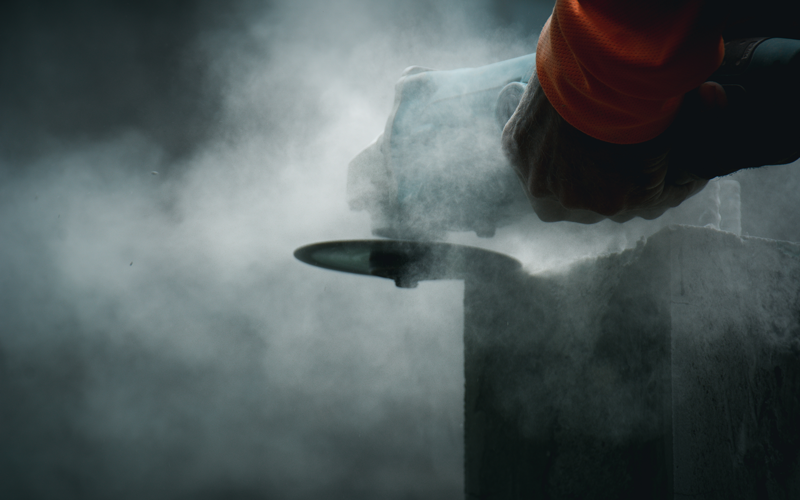
Managing construction dust
A recent prosecution by the Health and Safety Executive (HSE) has highlighted the importance of managing workers’ exposure to dust at all stages of the supply chain. In this case, a waste and recycling company specialising in processing wood waste was fined £160,000 after pleading guilty to breaching the Control of Substances Hazardous to Health (COSHH) Regulations 2002.
Members will be aware the law requires employers to prevent the ill health of their workers as far as is reasonably practicable, which includes prevention or adequate control of workers’ exposure to construction dust.
‘Construction Dust’ is a general term used by the HSE to describe any type of dust found on a construction site, including silica dust (likely to arise from sandstone, granite, concrete or mortar) non-silica dust (arising from gypsum, cement, limestone, bricks) and wood dust.

Construction dust is likely to be generated during activities which include cutting, drilling or grinding.
Whilst elimination of the risk of exposure to dust for workers is the gold standard (and can be achieved through good design and planning), where this is not possible measures should be put in place to control dust and provide workers with appropriately fitted respiratory protective equipment (RPE).
HSE guidance states employers must do three things:
1. Assess the risks
2. Control the risks
3. Review the control
The best solution from a dust perspective is to stop it entirely or isolate it from site. Practical solutions for landscape operatives include:
- Having the product cut by the supplier
- Cutting the product off-site
If this is not possible, the dust should be controlled and prevented from entering the air on-site with the use of:
- Water (to suppress dust)
- On-tool extraction of dust
Respiratory protection equipment (RPE) may also be required, where the other measures do not reduce exposure or cannot be used. The RPE used must be:
- adequate for the amount and type of dust. RPE has an assigned protection factor (APF) which shows how much protection it gives the wearer. The general level for construction dust is an APF of 20. This means the wearer only breathes one twentieth of the amount of dust in the air
- suitable for the work
- compatible with other PPE
- fit the user. Face fit testing is required for tight-fitting masks
- worn correctly. Anyone using tight-fitting masks must also be clean shaven
Other controls include:
- Limiting the number of people near where the dust is created
- Rotating individuals undertaking the work which creates dust
- Enclosing the work which creates dust
- Selecting work clothes that do not attract and retain dust
Regular checks to ensure the controls are being followed by all staff are also necessary.
More detail is available from the HSE website, below.
Further reading:
HSE Webpage: Construction dust
